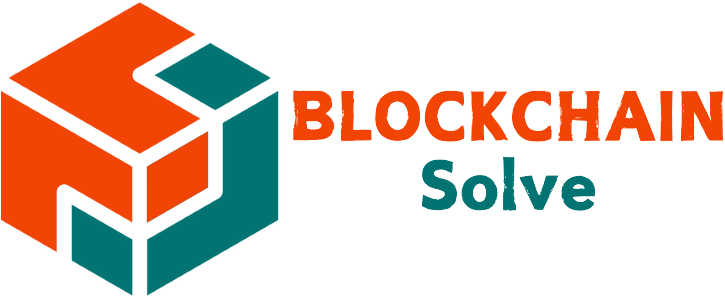Blockchain technology has moved beyond cryptocurrency hype and into the strategic plans of major corporations. Understanding the current enterprise blockchain adoption trends is no longer just for tech enthusiasts; it is essential for business leaders aiming to build more secure, transparent, and efficient operations. This article breaks down the key drivers, leading industries, and future outlook shaping the corporate blockchain landscape.
The key drivers behind enterprise blockchain adoption

The conversation around enterprise blockchain has shifted from potential to performance. Organizations are no longer just experimenting; they are implementing blockchain solutions to solve real-world problems. The primary drivers behind current enterprise blockchain adoption trends are tangible business benefits that go far beyond the initial hype, delivering measurable ROI and competitive advantages.
- Enhanced Transparency and Traceability: In complex supply chains, blockchain provides an immutable ledger. This allows all stakeholders to track goods from origin to destination, reducing fraud and ensuring authenticity. This is a key reason for the growth of blockchain technology in supply chain management.
- Increased Efficiency and Automation: Smart contracts automate business processes, executing agreements when predefined conditions are met. This reduces manual intervention, speeds up transactions, and minimizes costly errors across operations.
- Improved Security: A decentralized and cryptographically secured ledger is inherently more resistant to tampering and cyberattacks. This is a major improvement over traditional centralized databases for protecting critical business data.
Top industries leading blockchain integration

While blockchain’s potential is vast, its practical application is most visible in specific sectors leading the adoption charge. These industries leverage the technology to overcome long-standing challenges and create new value streams. Understanding these key areas highlights the most significant enterprise blockchain adoption trends and provides a roadmap for future growth across the global market.
Supply chain and logistics
Supply chain is arguably the most mature area for enterprise blockchain. The technology provides an immutable record for tracking goods from origin to consumer. This unparalleled visibility helps ensure product authenticity, reduce costly delays, and combat counterfeiting across global networks. It transforms how companies manage inventory and verify compliance.
Finance and banking
The financial sector is actively exploring blockchain for cross-border payments, trade finance, and digital asset management. The technology streamlines complex processes, reducing settlement times from days to minutes. It also lowers transaction costs by minimizing intermediaries, which is a major driver for adoption in this highly competitive industry.
Healthcare and life sciences
In healthcare, blockchain helps secure sensitive patient data and manage pharmaceutical supply chains. This prevents counterfeit drugs and streamlines consent for clinical trials. The growing use of blockchain in healthcare offers a secure way to share information while maintaining patient privacy and regulatory compliance.
Emerging technological trends in enterprise blockchain
Beyond industry-specific applications, several overarching technological trends are shaping how enterprises deploy and scale blockchain solutions. These developments are making the technology more flexible, powerful, and accessible for corporate use. Understanding these advancements is key to recognizing the latest enterprise blockchain adoption trends and their long-term impact on business operations.
- The Rise of Hybrid Blockchains: Organizations are increasingly opting for hybrid models. This approach combines the control of private blockchains with the security of public networks. It allows them to protect sensitive data on a permissioned chain while leveraging a public chain for immutable verification.
- Tokenization of Real-World Assets: Tokenization creates a digital representation of a physical or financial asset on a blockchain. This powerful trend is unlocking new investment opportunities and liquidity for traditionally illiquid assets. A prime example is the growth of tokenized real estate.
- Focus on Interoperability: As more blockchains emerge, their ability to communicate becomes critical. Interoperability protocols are key to creating a seamless network of chains. This prevents data silos and enhances collaboration across different ecosystems and industries.
The future outlook and remaining challenges

Despite significant progress, the road to mainstream adoption is not without its obstacles. However, the future outlook remains strong as the ecosystem matures and solutions to these challenges emerge. Two key areas are shaping the future trajectory of enterprise blockchain adoption trends: navigating complex regulations and overcoming technical hurdles to achieve scale.
Navigating the regulatory landscape
Regulatory uncertainty remains a primary concern for many businesses. As governments worldwide work to establish clear legal frameworks for digital assets and blockchain technology, organizations must remain agile and compliant. Clarity on this front is widely seen as the catalyst that will trigger the next wave of large-scale corporate investment and adoption.
Addressing scalability and integration
While platforms like Hyperledger Fabric and Corda are built for enterprise needs, challenges persist. Scalability and seamless integration with existing legacy IT systems are still significant barriers. The ongoing development of Layer-2 scaling solutions and more sophisticated APIs are paving the way for blockchains that can handle higher transaction volumes and connect effortlessly with traditional enterprise software.
The adoption of enterprise blockchain is clearly past the point of speculation and is now a matter of strategic implementation. As the technology becomes more integrated, interoperable, and supported by clearer regulations, its role in creating more transparent and efficient business ecosystems will only grow. For insights and solutions on leveraging these trends for your business, explore the resources at Blockchain Solve.

